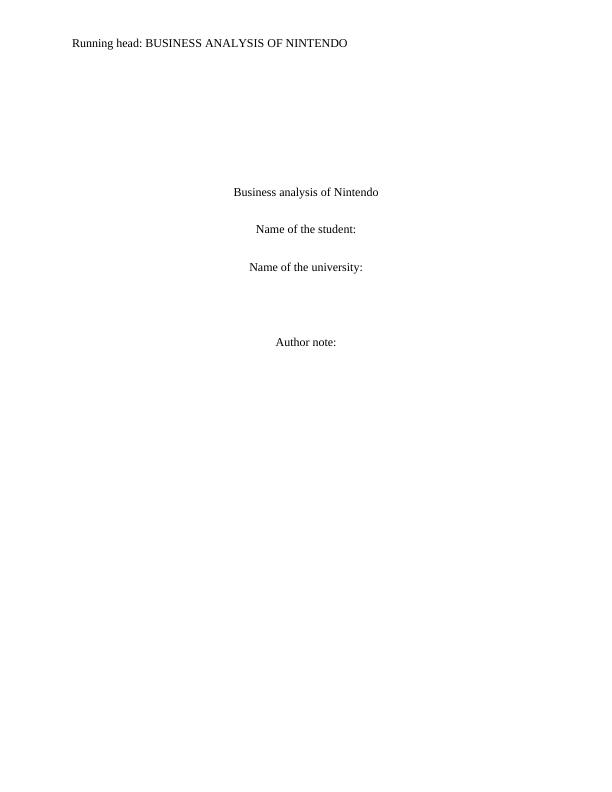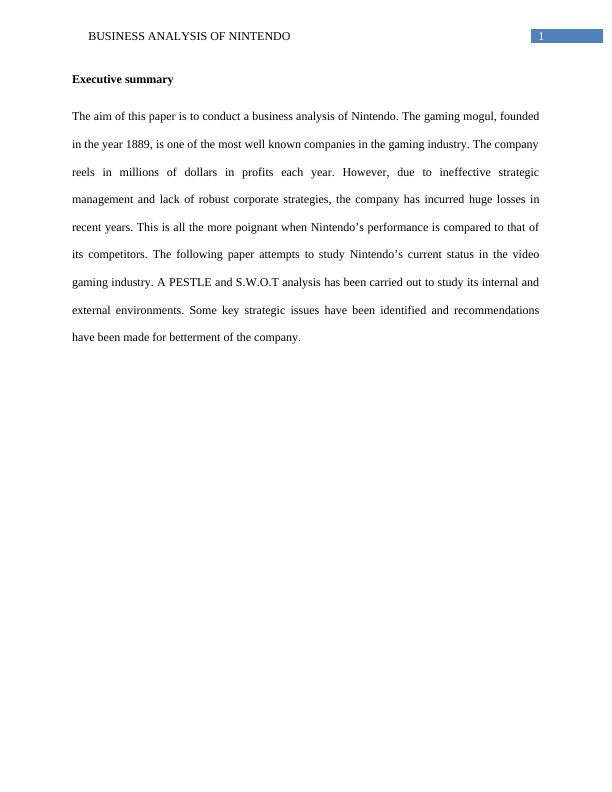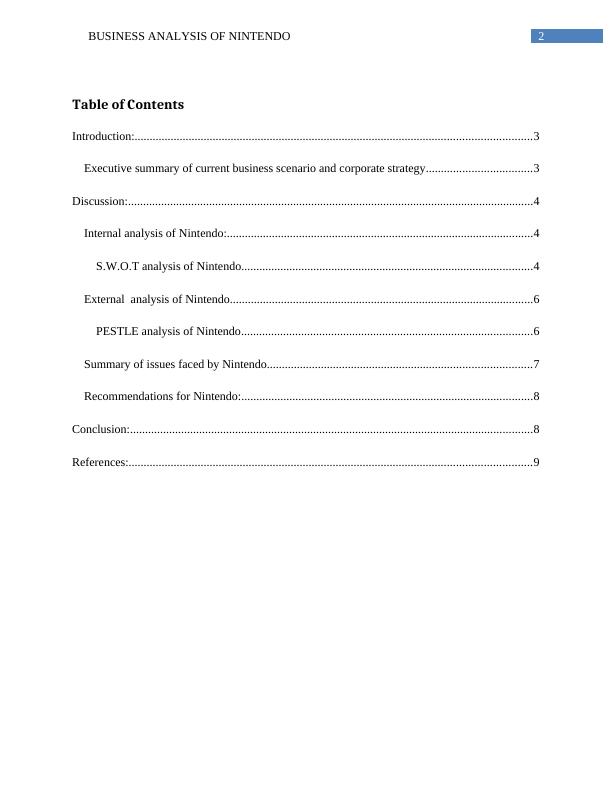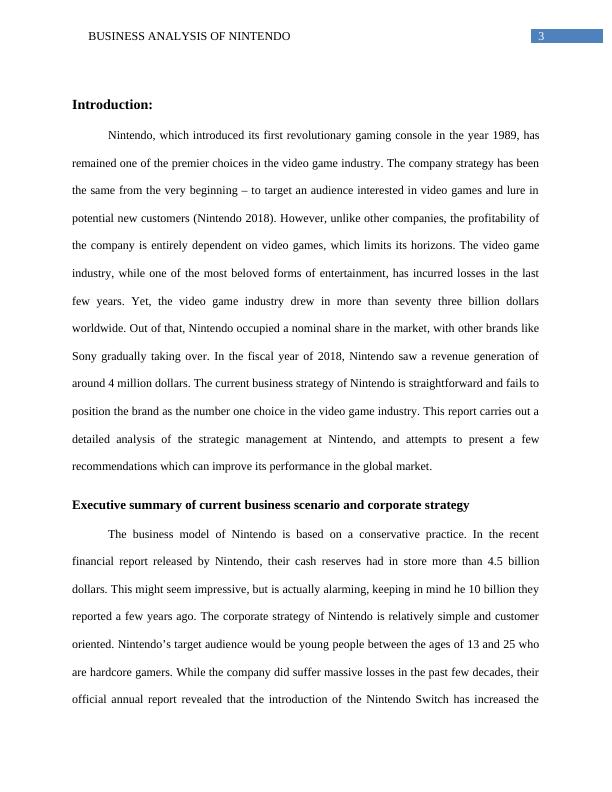Business Analysis of Nintendo
Assess Spotify's current 2016 business level and corporate strategy, and evaluate its capacity to sustain competitive advantage.
13 Pages2539 Words92 Views
Added on 2023-06-07
About This Document
This paper conducts a business analysis of Nintendo, identifying key strategic issues and providing recommendations for betterment of the company. A PESTLE and S.W.O.T analysis has been carried out to study its internal and external environments. The gaming industry is analyzed using business systems modeling and a PESTLE analysis. Subject: Business, Course Code: N/A, Course Name: N/A, College/University: N/A
Business Analysis of Nintendo
Assess Spotify's current 2016 business level and corporate strategy, and evaluate its capacity to sustain competitive advantage.
Added on 2023-06-07
ShareRelated Documents
End of preview
Want to access all the pages? Upload your documents or become a member.
Strategic Management: Nintendo Case Study
|18
|2423
|117
Strategic Analysis of Nintendo: SWOT, Porter's Five Forces, PESTLE Analysis
|19
|3113
|81
Competitive Dynamics in the Global Video Game Industry: A Case Study of Nintendo
|12
|2910
|235
Competitive Dynamics Report 2022
|12
|2865
|14
Nintendo: A Business Analysis
|12
|2494
|465
Strategic Management of Nintendo Co. Ltd
|15
|3265
|370




